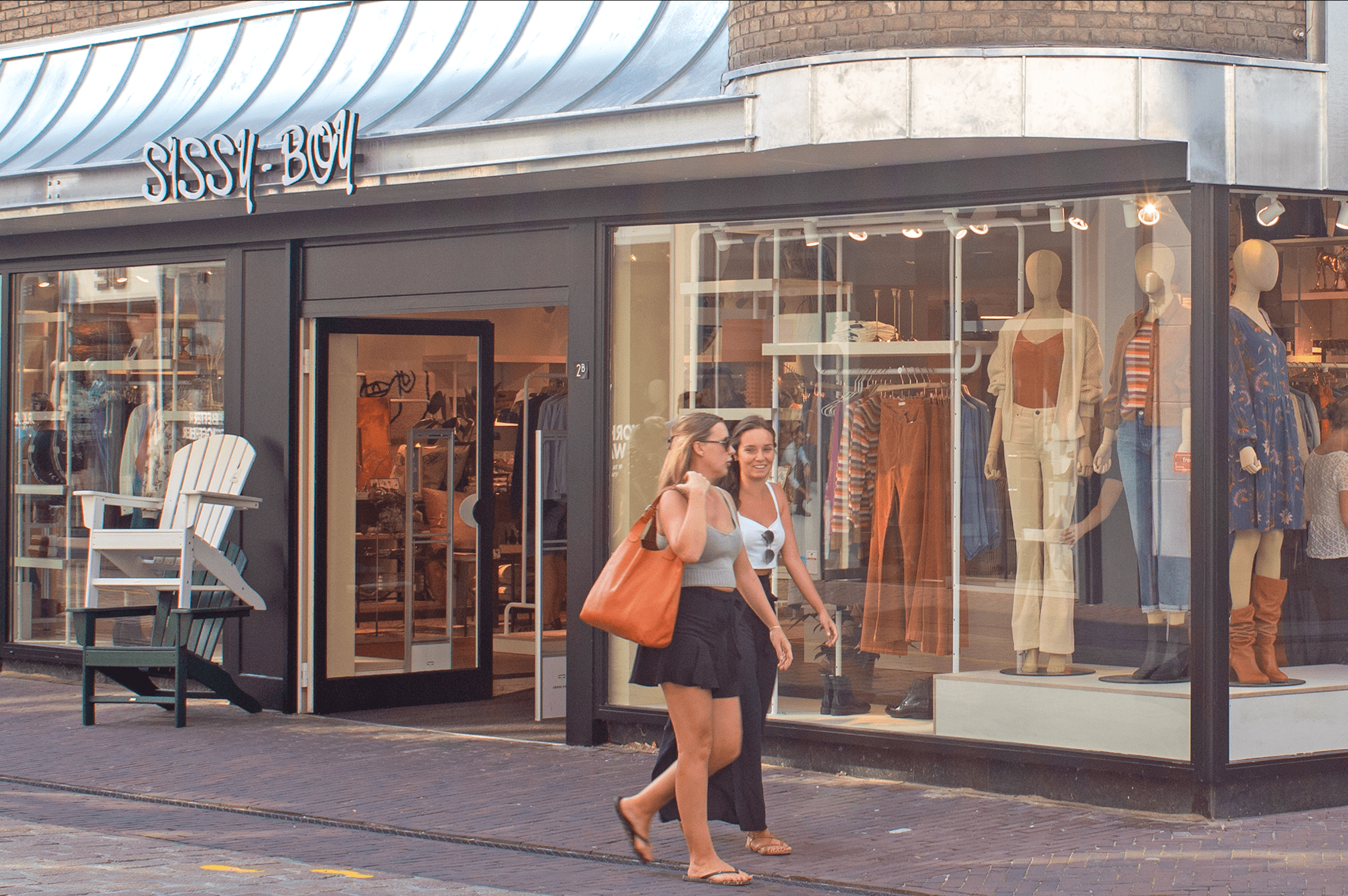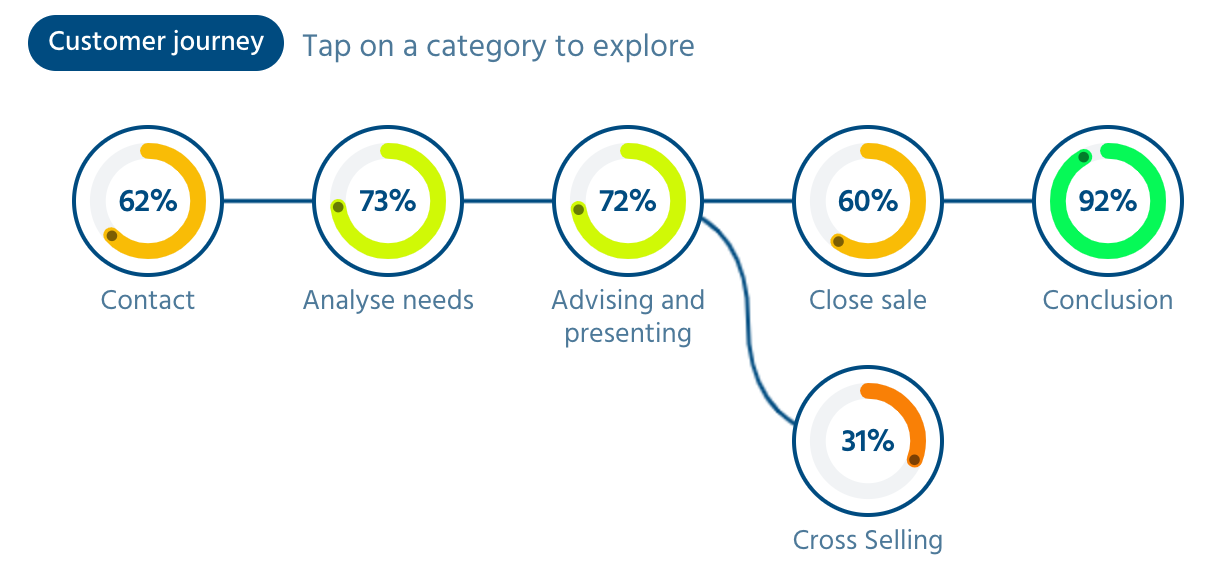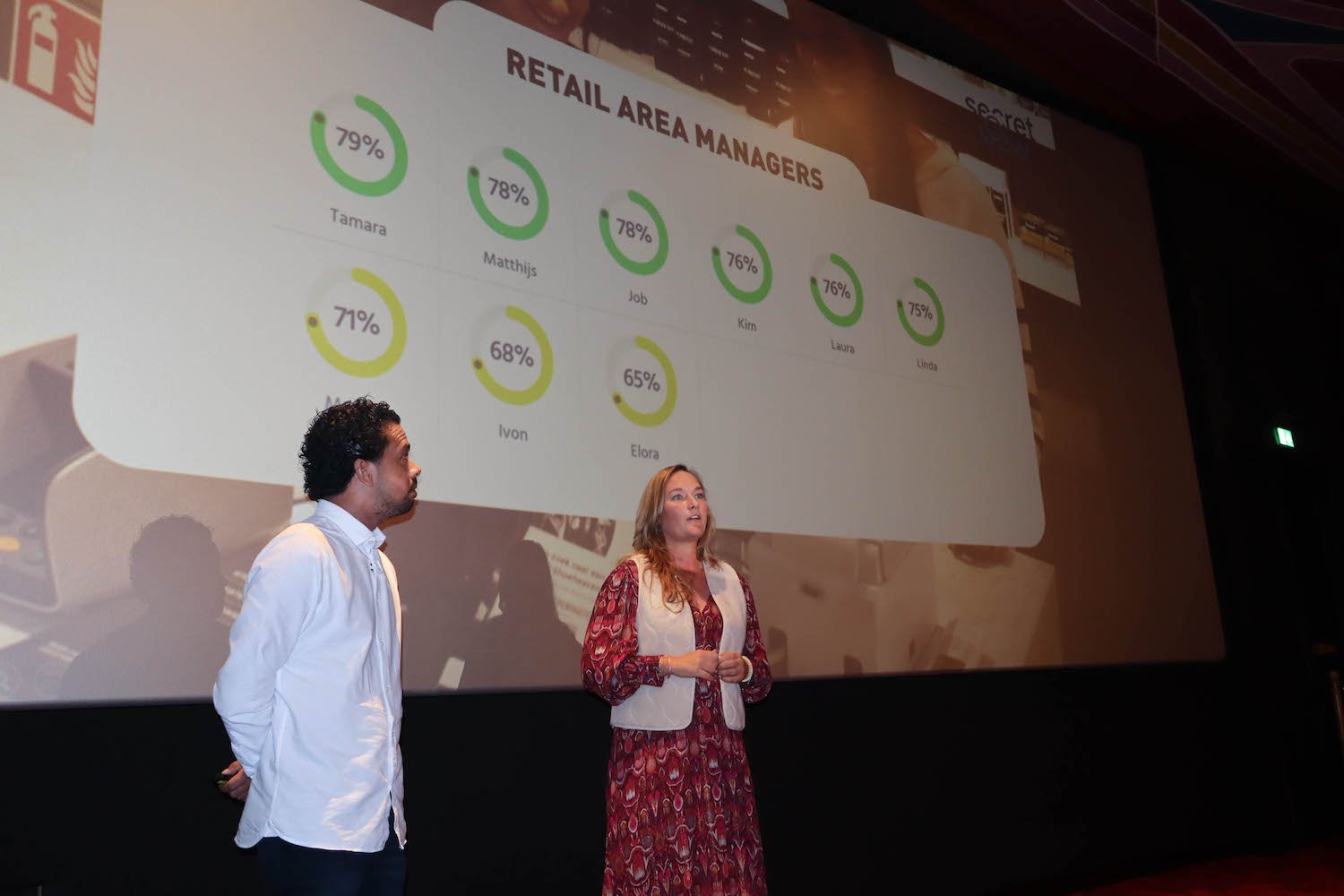Termeer Group (Manfield, Sissy-Boy)
In almost every (medium) large city in the Benelux, there's a store from the Termeer Group. Manfield and Sissy-Boy are well-known names if you ever visited a Dutch shopping street.

But the Termeer Group is also making its mark abroad. Currently, there are about 150 stores in three different countries. Every month, our mystery shoppers visit all the branches in the Netherlands.
Company: Termeer Group, parent company of Manfield, and Sissy-Boy
Industry: Fashion and lifestyle
Locations: 150
Customer since: 2023
Spoke with: Retail Area Managers Kim Visser and Matthijs Groen The Termeer Group is a real family business and has existed since 1909. The great-grandfather of the current owners then opened a small shoe factory in Tilburg. The core values of that time, craftsmanship and passion for the profession, are still central to the company.
Today, the company has grown into a lifestyle and fashion group with brands such as Manfield and Sissy-Boy. Termeer Group distinguishes itself with collections designed in-house.
Kim Visser and Matthijs Groen, both Retail Area Managers, tell more about the mystery shopping research, how it was set up, and how they use the results to improve customer experience.

Why does Termeer Group choose mystery shopping research from Secret View?
Matthijs: For that, we actually have to go back in time, to 2020 and the start of the coronavirus pandemic. As an industry, we naturally faced various challenges, with lockdowns, varying opening hours, and shopping by appointment.
Almost immediately afterward, we faced a tight labor market. This brought new challenges, and we noticed this on the shop floor. So, at the beginning of this year, we felt like we had to go back to basics. Back to our core business, with a strong focus on service and hospitality in the stores. Ensuring product knowledge is top of mind for everyone.
Together with our colleagues from Sales and other Retail Area Managers, we then simplified our existing training. We got to work with the store managers. But then the legitimate question came from the management team: "How are you planning to uphold and maintain this standard without any decline?"
Kim: Earlier, I had already worked with mystery shopping from Secret View at Sissy-Boy, and that's how the company came into the picture. I had good experiences with mystery shopping back then. It's a perfect way to measure customer experience and product knowledge. The tool is also great and very user-friendly.
Initially, the others were not so enthusiastic, as they had different experiences with mystery shopping. That someone comes by once every six months on a bad day, and then you're marked down for half a year. Fortunately, I am very persuasive, and that's how we started!
How is the mystery shopping research set up?
Matthijs: We asked our store managers to join and think about setting up the questionnaires. We actively engaged them from the very start to minimize any opposition and foster a sense of support. At our annual event where we present our new collections, Niek (founder Secret View) also gave a presentation. He emphasized that the results serve as valuable lessons, rather than a tool for criticism or reprimand. That helped tremendously in acceptance. The following Monday, we immediately started with the visits. All our branches are visited monthly.

We have mapped the entire customer journey and based the questionnaire on our sales plan. Does the employee have an open attitude? Did you feel welcome when you entered the store? Is the employee dressed representatively? How do you rate the advice of the employee? And at checkout, the employee must ask if the customer is a member of our loyalty program. This way, we cover the entire customer journey in the mystery shopping research.
Kim: It's interesting and notable that people generally spend more than the shopping credit, and thus actually see it as a discount. This underlines that the mystery shoppers who sign up for our assignments are indeed part of our target group. We leave it open what people have to buy; it can also be accessories, but we see that people often choose shoes. This means that people like to buy something there and are willing to spend more.
How do you deal internally with the results at different levels?
Matthijs: The store managers receive an email when a mystery shopper has visited. We expect them to read the report thoroughly and extract the learnings themselves. Try to recall the day and who was working.
A recent example: we expect every customer to be greeted upon arrival. All three employees were at the back of the store, and the customer was not greeted. However, the customer was then well assisted and left the store with a good feeling. The atmosphere is good, but the learning is that one should not stand together at the back of the store.
As a Retail Area Manager, you also visit each branch in your region every month. We also read all the reports, and before you go to a store, you quickly look at the dashboard for results and trends. It has become an important part of our conversation with the store manager.

Kim: Every Monday, there is a commercial meeting at the head office. All ongoing and upcoming actions for the coming period are discussed. The data from each formula is a crucial component in this process. It provides a broader perspective on trends, except when stores exceptionally excel or underperform.
In addition, every store has a celebration fund. That's our incentive program, and we've added mystery shopping to it. So, if the results are above average, extra money is deposited, and they can have a nice drink at the end of the year. It serves as a constant reminder for us as Retail Area Managers to acknowledge and celebrate our achievements, an aspect that can often be overlooked amidst the daily responsibilities and challenges we face.
How does Termeer Group use the dashboard?
Kim: As we said before, we had to go back to basics. Really making sure that the service and knowledge level in the stores returned to the desired level with training. With the dashboard, we now track the results of those trainings. It also provides valuable input for further training.
We can now see per formula and location where there is a need. Maybe at Manfield, the product knowledge is good, but at Sissy-Boy it's lower, and the service is better. This way, you can set up targeted training for each formula and location.

The dashboard is also a thermometer to see if our employees are focused on the main issues. In a store, there's of course a lot to do, besides helping customers. But helping customers and providing a good experience is the most important thing. If we see that customer experience is declining, it's a sign for us to remove other tasks, such as visual merchandising, for example.
What effect has the mystery shopping research had on the organization?
Kim: When there was first talk of mystery shopping research, there was some resistance. We eliminated that together with Secret View before the start by seeing the feedback as learnings. Now it turned 180 degrees. Of course, it's not nice to read a negative experience, but it's never 100% negative; it's always constructive criticism. That also makes it that people are open to learning from it. Also, because the results quickly return to the shop floor. A maximum of two days after the mystery shopper has completed the assignment, the results are with the store manager.
We also see that the level in our stores is rising again. It remains difficult in some places with the staff shortage. We then fill that with temporary workers, and you have different expectations of them than our own employees. But overall, there's a nice upward trend. Now the feedback is a gift, really meant to get the service level back to the old level.
Do you want to take customer experience to a higher level with your organization?
We now have years of experience in various sectors with customer experience research. We map customer experience for restaurants, supermarkets, clothing stores, and various other sectors. Take a look at our cases or contact us for a demo.




